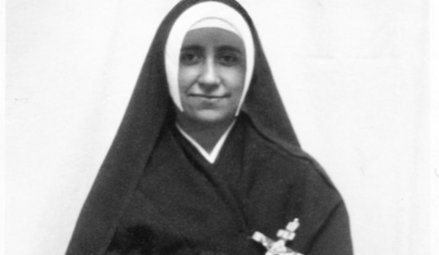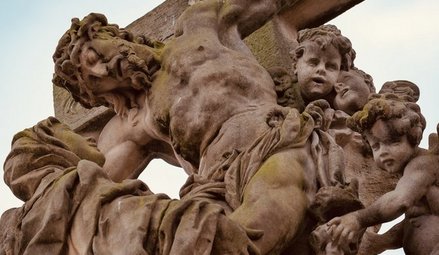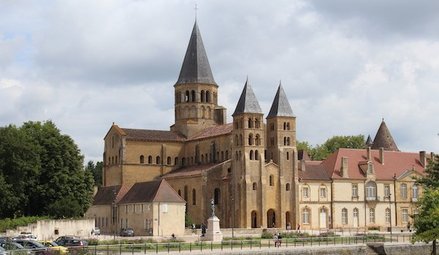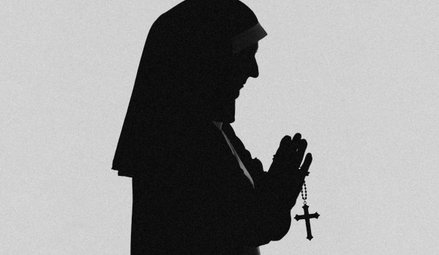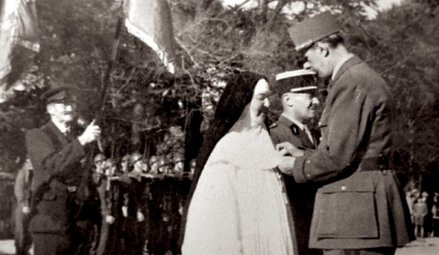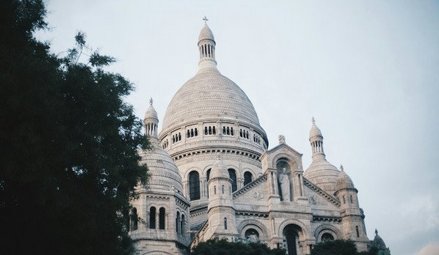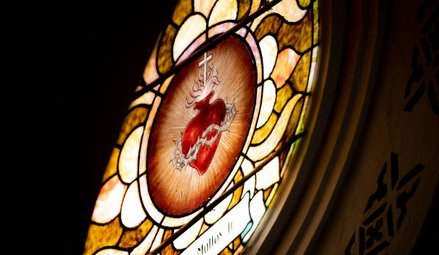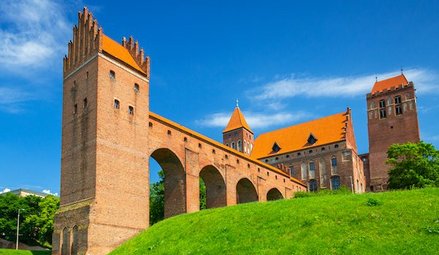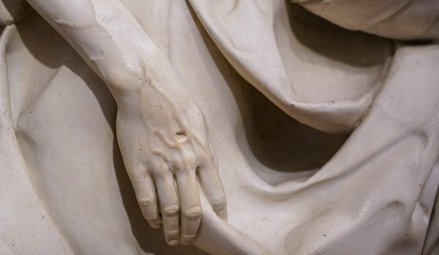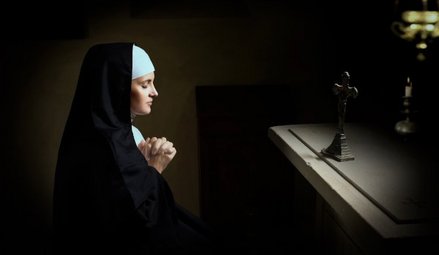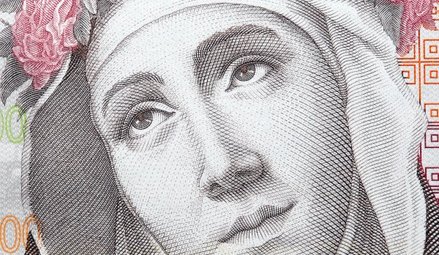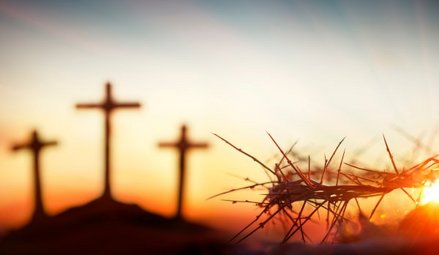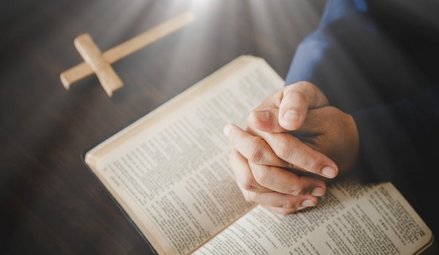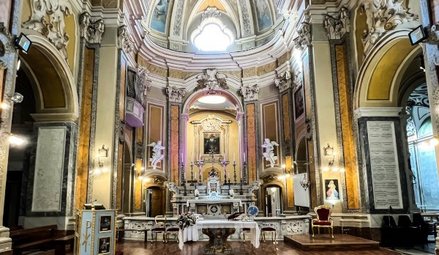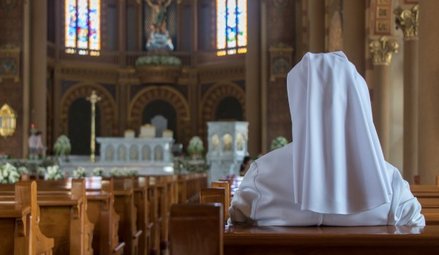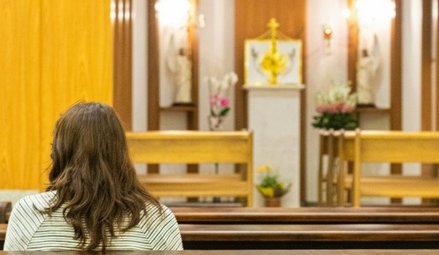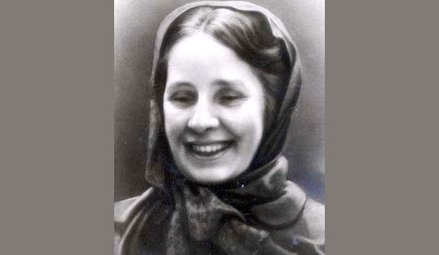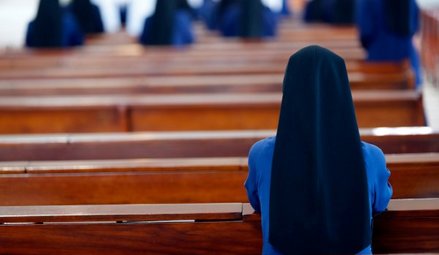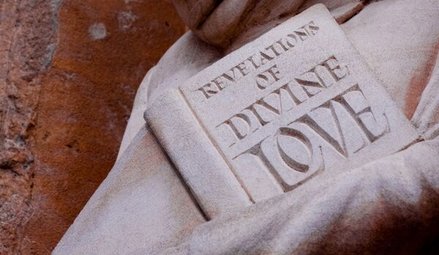- By theme
- Jesus
- The many proofs of Christ’s resurrection
- Saint Thomas Aquinas: God gave all the divine proofs we needed to believe
- The surpassing power of Christ's word
- Lewis’s trilemma: a proof of Jesus’s divinity
- God saves: the power of the holy name of Jesus
- Jesus spoke and acted as God's equal
- Jesus' divinity is actually implied in the Koran
- Jesus came at the perfect time of history
- Rabbinical sources testify to Jesus' miracles
- Mary
- The Church
- The Bible
- An enduring prophecy and a series of miraculous events preventing the reconstruction of the Temple
- The authors of the Gospels were either eyewitnesses or close contacts of those eyewitnesses
- Onomastics support the historical reliability of the Gospels
- The New Testament was not altered
- The New Testament is the best-attested manuscript of Antiquity
- The Gospels were written too early after the facts to be legends
- Archaeological finds confirm the reliability of the New Testament
- The criterion of embarrassment proves that the Gospels tell the truth
- The dissimilarity criterion strengthens the case for the historical reliability of the Gospels
- 84 details in Acts verified by historical and archaeological sources
- The unique prophecies that announced the Messiah
- The time of the coming of the Messiah was accurately prophesied
- The prophet Isaiah's ultra accurate description of the Messiah's sufferings
- Daniel's "Son of Man" is a portrait of Christ
- The Apostles
- Saint Peter, prince of the apostles
- Saint John the Apostle: an Evangelist and Theologian who deserves to be better known (d. 100)
- Saint Matthew, apostle, evangelist and martyr (d. 61)
- James the Just, “brother” of the Lord, apostle and martyr (d. 62 AD)
- Saint Matthias replaces Judas as an apostle (d. 63)
- The martyrs
- The protomartyr Saint Stephen (d. 31)
- Polycarp, bishop of Smyrna, disciple of John and martyr (d. 155)
- Justin Martyr: philosopher and apologist (d.165)
- Saint Blandina and the Martyrs of Lyon: the fortitude of faith (177 AD)
- Saint Agatha stops a volcano from destroying the city of Catania (d. 251)
- Saint Lucy of Syracuse, virgin and martyr for Christ (d. 304)
- Saint Boniface propagates Christianity in Germany (d. 754)
- Thomas More: “The king’s good servant, but God’s first”
- The martyrdom of Paul Miki and his companions (d. 1597)
- The martyrs of Angers and Avrillé (1794)
- The Martyrs of Compiègne (1794)
- The Vietnamese martyrs Father Andrew Dung-Lac and his 116 companions (17th-19th centuries)
- He braved torture to atone for his apostasy (d. 1818)
- Blaise Marmoiton: the epic journey of a missionary to New Caledonia (d. 1847)
- The Uganda martyrs: a recurring pattern in the persecution of Christians (1885)
- José Luis Sanchez del Rio, martyred at age 14 for Christ the King (d. 1928)
- Saint Maximilian Kolbe, Knight of the Immaculate (d. 1941)
- The monks
- The Desert Fathers (3rd century)
- Saint Anthony of the Desert, a father of monasticism (d. 356)
- Saint Benedict, father of Western monasticism (d. 550)
- Saint Bruno the Carthusian (d.1101): the miracle of a hidden life
- Blessed Angelo Agostini Mazzinghi: the Carmelite with flowers pouring from his mouth (d. 1438)
- Monk Abel of Valaam's accurate prophecies about Russia (d. 1841)
- The more than 33,000 miracles of Saint Charbel Maklouf (d. 1898)
- Saint Pio of Pietrelcina (d. 1968): How God worked wonders through "a poor brother who prays"
- The surprising death of Father Emmanuel de Floris (d. 1992)
- The prophecies of Saint Paisios of Mount Athos (d. 1994)
- The saints
- Saints Anne and Joachim, parents of the Virgin Mary (19 BC)
- Saint Nazarius, apostle and martyr (d. 68 or 70)
- Ignatius of Antioch: successor of the apostles and witness to the Gospel (d. 117)
- Saint Gregory the Miracle-Worker (d. 270)
- Saint Martin of Tours: patron saint of France, father of monasticism in Gaul, and the first great leader of Western monasticism (d. 397)
- Saint Augustine of Canterbury evangelises England (d. 604)
- Saint Lupus, the bishop who saved his city from the Huns (d. 623)
- Saint Rainerius of Pisa: from musician to merchant to saint (d. 1160)
- Saint Dominic of Guzman (d.1221): an athlete of the faith
- Saint Francis, the poor man of Assisi (d. 1226)
- Saint Anthony of Padua: "everyone’s saint"
- Saint Rose of Viterbo or How prayer can transform the world (d. 1252)
- Saint Simon Stock receives the scapular of Mount Carmel from the hands of the Virgin Mary
- The unusual boat of Saint Basil of Ryazan
- Saint Agnes of Montepulciano's complete God-confidence (d. 1317)
- The extraordinary conversion of Michelina of Pesaro
- Saint Peter Thomas (d. 1366): a steadfast trust in the Virgin Mary
- Saint Rita of Cascia: hoping against all hope
- Saint Catherine of Genoa and the Fire of God's love (d. 1510)
- Saint Anthony Mary Zaccaria, physician of bodies and souls (d. 1539)
- Saint Ignatius of Loyola (d. 1556): "For the greater glory of God"
- Brother Alphonsus Rodríguez, SJ: the "holy porter" (d. 1617)
- Martin de Porres returns to speed up his beatification (d. 1639)
- Virginia Centurione Bracelli: When God is the only goal, all difficulties are overcome (d.1651)
- Saint Marie of the Incarnation, "the Teresa of New France" (d.1672)
- St. Francis di Girolamo's gift of reading hearts and souls (d. 1716)
- Rosa Venerini: moving in the ocean of the Will of God (d. 1728)
- Saint Jeanne-Antide Thouret: heroic perseverance and courage (d. 1826)
- Seraphim of Sarov (1759-1833): the purpose of the Christian life is to acquire the Holy Spirit
- Camille de Soyécourt, filled with divine fortitude (d. 1849)
- Bernadette Soubirous, the shepherdess who saw the Virgin Mary (1858)
- Saint John Vianney (d. 1859): the global fame of a humble village priest
- Gabriel of Our Lady of Sorrows, the "Gardener of the Blessed Virgin" (d. 1862)
- Father Gerin, the holy priest of Grenoble (1863)
- Blessed Francisco Palau y Quer: a lover of the Church (d. 1872)
- Saints Louis and Zelie Martin, the parents of Saint Therese of Lisieux (d. 1894 and 1877)
- The supernatural maturity of Francisco Marto, “contemplative consoler of God” (d. 1919)
- Saint Faustina, apostle of the Divine Mercy (d. 1938)
- Brother Marcel Van (d.19659): a "star has risen in the East"
- Doctors
- The mystics
- Lutgardis of Tongeren and the devotion to the Sacred Heart
- Saint Angela of Foligno (d. 1309) and "Lady Poverty"
- Saint John of the Cross: mystic, reformer, poet, and universal psychologist (+1591)
- Blessed Anne of Jesus: a Carmelite nun with mystical gifts (d.1621)
- Catherine Daniélou: a mystical bride of Christ in Brittany
- Saint Margaret Mary sees the "Heart that so loved mankind"
- Jesus makes Maria Droste zu Vischering the messenger of his Divine Heart (d. 1899)
- Mother Yvonne-Aimée of Jesus' predictions concerning the Second World War (1922)
- Sister Josefa Menendez, apostle of divine mercy (d. 1923)
- Edith Royer (d. 1924) and the Sacred Heart Basilica of Montmartre
- Rozalia Celak, a mystic with a very special mission (d. 1944)
- Visionaries
- Saint Perpetua delivers her brother from Purgatory (203)
- María de Jesús de Ágreda, abbess and friend of the King of Spain
- Discovery of the Virgin Mary's house in Ephesus (1891)
- Sister Benigna Consolata: the "Little Secretary of Merciful Love" (d. 1916)
- Maria Valtorta's visions match data from the Israel Meteorological Service (1943)
- Berthe Petit's prophecies about the two world wars (d. 1943)
- Maria Valtorta saw only one pyramid at Giza in her visions... and she was right! (1944)
- The location of Saint Peter's village seen in a vision before its archaeological discovery (1945)
- The 700 extraordinary visions of the Gospel received by Maria Valtorta (d. 1961)
- The amazing geological accuracy of Maria Valtorta's writings (d. 1961)
- Maria Valtorta's astronomic observations consistent with her dating system
- Discovery of an ancient princely house in Jerusalem, previously revealed to a mystic (d. 1961)
- Mariette Kerbage, the seer of Aleppo (1982)
- The 20,000 icons of Mariette Kerbage (2002)
- The popes
- The great witnesses of the faith
- Saint Augustine's conversion: "Why not this very hour make an end to my uncleanness?" (386)
- Thomas Cajetan (d. 1534): a life in service of the truth
- Madame Acarie, "the servant of the servants of God" (d. 1618)
- Blaise Pascal (d.1662): Biblical prophecies are evidence
- Madame Élisabeth and the sweet smell of virtue (d. 1794)
- Jacinta, 10, offers her suffering to save souls from hell (d. 1920)
- Father Jean-Édouard Lamy: "another Curé of Ars" (d. 1931)
- Christian civilisation
- The depth of Christian spirituality
- John of the Cross' Path to perfect union with God based on his own experience
- The dogma of the Trinity: an increasingly better understood truth
- The incoherent arguments against Christianity
- The "New Pentecost": modern day, spectacular outpouring of the Holy Spirit
- The Christian faith explains the diversity of religions
- Cardinal Pierre de Bérulle (d.1629) on the mystery of the Incarnation
- Christ's interventions in history
- Marian apparitions and interventions
- The Life-giving Font of Constantinople
- Apparition of Our Lady of La Treille in northern France: prophecy and healings (600)
- Our Lady of Virtues saves the city of Rennes in Bretagne (1357)
- Mary stops the plague epidemic at Mount Berico (1426)
- Our Lady of Miracles heals a paralytic in Saronno (1460)
- Cotignac: the first apparitions of the Modern Era (1519)
- Savona: supernatural origin of the devotion to Our Lady of Mercy (1536)
- The Virgin Mary delivers besieged Christians in Cusco, Peru
- The victory of Lepanto and the feast of Our Lady of the Rosary (1571)
- The apparitions to Brother Fiacre (1637)
- The “aldermen's vow”, or the Marian devotion of the people of Lyon (1643)
- Our Lady of Nazareth in Plancoët, Brittany (1644)
- Our Lady of Laghet (1652)
- Saint Joseph’s apparitions in Cotignac, France (1660)
- Heaven confides in a shepherdess of Le Laus (1664-1718)
- Zeitoun, a two-year miracle (1968-1970)
- The Holy Name of Mary and the major victory of Vienna (1683)
- Heaven and earth meet in Colombia: the Las Lajas shrine (1754)
- The five Marian apparitions that traced an "M" over France, and its new pilgrimage route
- A series of Marian apparitions and prophetic messages in Ukraine since the 19th century (1806)
- "Consecrate your parish to the Immaculate Heart of Mary" (1836)
- At La Salette, Mary wept in front of the shepherds (1846)
- Our Lady of Champion, Wisconsin: the first and only approved apparition of Mary in the US (1859)
- Gietrzwald apparitions: heavenly help to a persecuted minority
- The silent apparition of Knock Mhuire in Ireland (1879)
- Mary "Abandoned Mother" appears in a working-class district of Lyon, France (1882)
- The thirty-three apparitions of the Virgin Mary in Beauraing (1932)
- "Our Lady of the Poor" appears eight times in Banneux (1933)
- Fontanelle-Montichiari apparitions of Our Lady "Rosa Mystica" (1947)
- Mary responds to the Vows of the Polish Nation (1956)
- Zeitoun apparitions
- The Virgin Mary comes to France's rescue by appearing at L'Ile Bouchard (1947)
- Maria Esperanza Bianchini and Mary, Mary, Reconciler of Peoples and Nations (1976)
- Luz Amparo and the El Escorial apparitions
- The extraordinary apparitions of Medjugorje and their worldwide impact
- The Virgin Mary prophesied the 1994 Rwandan genocide (1981)
- Our Lady of Soufanieh's apparition and messages to Myrna Nazzour (1982)
- The Virgin Mary heals a teenager, then appears to him dozens of times (1986)
- Seuca, Romania: apparitions and pleas of the Virgin Mary, "Queen of Light" (1995)
- Angels and their manifestations
- Mont Saint-Michel: Heaven watching over France
- The revelation of the hymn Axion Estin by the Archangel Gabriel (982)
- Angels give a supernatural belt to the chaste Thomas Aquinas (1243)
- The constant presence of demons and angels in the life of St Frances of Rome (d. 1440)
- Mother Yvonne-Aimée escapes from prison with the help of an angel (1943)
- Saved by Angels: The Miracle on Highway 6 (2008)
- Exorcisms in the name of Christ
- A wave of charity unique in the world
- Saint Peter Nolasco: a life dedicated to ransoming enslaved Christians (d. 1245)
- Rita of Cascia forgives her husband's murderer (1404)
- Saint Angela Merici: Christ came to serve, not to be served (d. 1540)
- Saint John of God: a life dedicated to the care of the poor, sick and those with mental disorders (d. 1550)
- Saint Camillus de Lellis, reformer of hospital care (c. 1560)
- Blessed Alix Le Clerc, encouraged by the Virgin Mary to found schools (d. 1622)
- Saint Vincent de Paul (d. 1660), apostle of charity
- Marguerite Bourgeoys, Montreal's first teacher (d. 1700)
- Frédéric Ozanam, inventor of the Church's social doctrine (d. 1853)
- Damian of Molokai: a leper for Christ (d. 1889)
- Pier Giorgio Frassati (d.1925): heroic charity
- Saint Dulce of the Poor, the Good Angel of Bahia (d. 1992)
- Mother Teresa of Calcutta (d. 1997): an unshakeable faith
- Heidi Baker: Bringing God's love to the poor and forgotten of the world
- Amazing miracles
- The miracle of liquefaction of the blood of St. Januarius (d. 431)
- The miracles of Saint Anthony of Padua (d. 1231)
- Saint Pius V and the miracle of the Crucifix (1565)
- Saint Philip Neri calls a teenager back to life (1583)
- The resurrection of Jérôme Genin (1623)
- Saint Francis de Sales brings back to life a victim of drowning (1623)
- Saint John Bosco and the promise kept beyond the grave (1839)
- The day the sun danced at Fatima (1917)
- Pius XII and the miracle of the sun at the Vatican (1950)
- When Blessed Charles de Foucauld saved a young carpenter named Charle (2016)
- Reinhard Bonnke: 89 million conversions (d. 2019)
- Miraculous cures
- The royal touch: the divine thaumaturgic gift granted to French and English monarchs (11th-19th centuries)
- With 7,500 cases of unexplained cures, Lourdes is unique in the world (1858-today)
- Our Lady at Pellevoisin: "I am all merciful" (1876)
- Mariam, the "little thing of Jesus": a saint from East to West (d.1878)
- The miraculous healing of Marie Bailly and the conversion of Dr. Alexis Carrel (1902)
- Gemma Galgani: healed to atone for sinners' faults (d. 1903)
- The miraculous cure of Blessed Maria Giuseppina Catanea
- The extraordinary healing of Alice Benlian in the Church of the Holy Cross in Damascus (1983)
- The approved miracle for the canonization of Juan Diego Cuauhtlatoatzin (1990)
- Healed by St Charbel Makhlouf, her scars bleed each month for the benefit of unbelievers (1993)
- The miracle that led to Brother André's canonisation (1999)
- Bruce Van Natta's intestinal regrowth: an irrefutable miracle (2007)
- He had “zero” chance of living: a baby's miraculous recovery (2015)
- Manouchak, operated on by Saint Charbel (2016)
- How Maya was cured from cancer at Saint Charbel's tomb (2018)
- Preserved bodies of the saints
- Dying in the odour of sanctity
- The body of Saint Cecilia found incorrupt (d. 230)
- Saint Claudius of Besançon: a quiet leader, a calm presence, and a strong belief in the value of prayer (d. 699)
- Stanislaus Kostka's burning love for God (d. 1568)
- Saint Germaine of Pibrac: God's little Cinderella (d. 1601)
- Blessed Antonio Franco, bishop and defender of the poor (d. 1626)
- Giuseppina Faro, servant of God and of the poor (d. 1871)
- The incorrupt body of Marie-Louise Nerbollier, the visionary from Diémoz (d. 1910)
- The great exhumation of Saint Charbel (1950)
- Bilocations
- Inedias
- Levitations
- Lacrimations and miraculous images
- Saint Juan Diego's tilma (1531)
- The Rue du Bac apparitions of the Virgin Mary to St. Catherine Labouré (Paris, 1830)
- Mary weeps in Syracuse (1953)
- Teresa Musco (d.1976): salvation through the Cross
- Soufanieh: A flow of oil from an image of the Virgin Mary, and oozing of oil from the face and hands of Myrna Nazzour (1982)
- The Saidnaya icon exudes a wonderful fragrance (1988)
- Our Lady weeps in a bishop's hands (1995)
- Stigmates
- The venerable Lukarda of Oberweimar shares her spiritual riches with her convent (d. 1309)
- Florida Cevoli: a heart engraved with the cross (d. 1767)
- Blessed Maria Grazia Tarallo, mystic and stigmatist (d. 1912)
- Saint Padre Pio: crucified by Love (1918)
- Elena Aiello: "a Eucharistic soul"
- A Holy Triduum with a Syrian mystic, witnessing the sufferings of Christ (1987)
- A Holy Thursday in Soufanieh (2004)
- Eucharistic miracles
- Lanciano: the first and possibly the greatest Eucharistic miracle (750)
- A host came to her: 11-year-old Imelda received Communion and died in ecstasy (1333)
- Faverney's hosts miraculously saved from fire
- A tsunami recedes before the Blessed Sacrament (1906)
- Buenos Aires miraculous host sent to forensic lab, found to be heart muscle (1996)
- Relics
- The Veil of Veronica, known as the Manoppello Image
- For centuries, the Shroud of Turin was the only negative image in the world
- The Holy Tunic of Argenteuil's fascinating history
- Saint Louis (d. 1270) and the relics of the Passion
- The miraculous rescue of the Shroud of Turin (1997)
- A comparative study of the blood present in Christ's relics
- Jews discover the Messiah
- Francis Xavier Samson Libermann, Jewish convert to Catholicism (1824)
- Our Lady of the Miraculous Medal and the conversion of Alphonse Ratisbonne (1842)
- Max Jacob: a liberal gay Jewish artist converts to Catholicism (1909)
- Edith Stein - Saint Benedicta of the Cross: "A daughter of Israel who, during the Nazi persecutions, remained united with faith and love to the Crucified Lord, Jesus Christ, as a Catholic, and to her people as a Jew"
- Patrick Elcabache: a Jew discovers the Messiah after his mother is miraculously cured in the name of Jesus
- Olivier's conversion story: from Pesach to the Christian Easter (2000)
- Cardinal Aron Jean-Marie Lustiger (d. 2007): Chosen by God
- Muslim conversions
- He met Jesus while looking for Muhammad (1990)
- Selma's journey to baptism (1996)
- Soumia, converted to Jesus as she hears Christmas carols (2003)
- How Aïsha, a Muslim convert, found Jesus (2004)
- Amir chooses Christ, at the risk of becoming homeless (2004)
- Souad Brahimi: brought to Jesus by Mary (2012)
- Pursued by God: Khadija's story (2023)
- Buddhist conversions
- Atheist conversions
- The conversion of an executioner during the Terror (1830)
- God woos a poet's heart: the story of Paul Claudel's conversion (1886)
- From agnostic to Catholic Trappist monk (1909)
- Dazzled by God: Madeleine Delbrêl's story (1924)
- C.S. Lewis, the reluctant convert (1931)
- The day André Frossard met Christ in Paris (1935)
- MC Solaar's rapper converts after experiencing Jesus' pains on the cross
- Father Sébastien Brière, converted at Medjugorje (2003)
- Franca Sozzani, the "Pope of fashion" who wanted to meet the Pope (2016)
- Nelly Gillant: from Reiki Master to Disciple of Christ (2018)
- Testimonies of encounters with Christ
- Near-death experiences (NDEs) confirm Catholic doctrine on the Four Last Things
- The NDE of Saint Christina the Astonishing, a source of conversion to Christ (1170)
- Jesus audibly calls Alphonsus Liguori to follow him (1723)
- Blessed Dina Bélanger (d. 1929): loving God and letting Jesus and Mary do their job
- Gabrielle Bossis: He and I
- André Levet's conversion in prison
- Journey between heaven and hell: a "near-death experience" (1971)
- Jesus' message to Myrna Nazzour (1984)
- Alicja Lenczewska: conversations with Jesus (1985)
- Vassula Ryden and the "True Life in God" (1985)
- Nahed Mahmoud Metwalli: from persecutor to persecuted (1987)
- The Bible verse that converted a young Algerian named Elie (2000)
- Invited to the celestial court: the story of Chantal (2017)
- Providential stories
- The superhuman intuition of Saint Pachomius the Great
- Ambrose of Milan finds the bodies of the martyrs Gervasius and Protasius (386)
- Germanus of Auxerre's prophecy about Saint Genevieve's future mission, and protection of the young woman (446)
- Seven golden stars reveal the future location of the Grande Chartreuse Monastery (1132)
- The supernatural reconciliation of the Duke of Aquitaine (1134)
- Saint Zita and the miracle of the cloak (13th c.)
- Joan of Arc: "the most beautiful story in the world"
- John of Capistrano saves the Church and Europe (1456)
- A celestial music comforts Elisabetta Picenardi on her deathbed (d. 1468)
- Gury of Kazan: freed from his prison by a "great light" (1520)
- The strange adventure of Yves Nicolazic (1623)
- Julien Maunoir miraculously learns Breton (1626)
- Pierre de Keriolet: with Mary, one cannot be lost (1636)
- How Korea evangelized itself (18th century)
- A hundred years before it happened, Saint Andrew Bobola predicted that Poland would be back on the map (1819)
- The prophetic poem about John Paul II (1840)
- Don Bosco's angel dog: Grigio (1854)
- The purifying flames of Sophie-Thérèse de Soubiran La Louvière (1861)
- Thérèse of Lisieux saved countless soldiers during the Great War
- Lost for over a century, a Russian icon reappears (1930)
- In 1947, a rosary crusade liberated Austria from the Soviets (1946-1955)
- The discovery of the tomb of Saint Peter in Rome (1949)
- He should have died of hypothermia in Soviet jails (1972)
- God protects a secret agent (1975)
- Flowing lava stops at church doors (1977)
- A protective hand saved John Paul II and led to happy consequences (1981)
- Mary Undoer of Knots: Pope Francis' gift to the world (1986)
- Edmond Fricoteaux's providential discovery of the statue of Our Lady of France (1988)
- The Virgin Mary frees a Vietnamese bishop from prison (1988)
- The miracles of Saint Juliana of Nicomedia (1994)
- Global launch of "Pilgrim Virgins" was made possible by God's Providence (1996)
- The providential finding of the Mary of Nazareth International Center's future site (2000)
- Syrian Monastery shielded from danger multiple times (2011-2020)
- Jesus
- Who are we?
- Make a donation
EVERY REASON TO BELIEVE
Les mystiques
n°42
Paray-le-Monial, Bourgogne (France)
1647-1690
Saint Margaret Mary sees the "Heart that so loved mankind"
Margaret Mary Alacoque entered the Visitation convent at Paray-le-Monial in 1671. Her simple life as a nun was punctuated by mystical graces. On June 20, 1675, she had the vision that is the main origin of the feast of the Sacred Heart, a solemnity of the utmost importance for Catholics the world over: ""Behold the Heart which has so loved men that it has spared nothing, even to exhausting and consuming Itself, in order to testify Its love". Initially beatified by popular opinion because of the miracles obtained through her intercession, Margaret Mary was not "officially" beatified until 1864, as Jansenist pressure and the Revolution delayed the process. She was canonized in 1920.
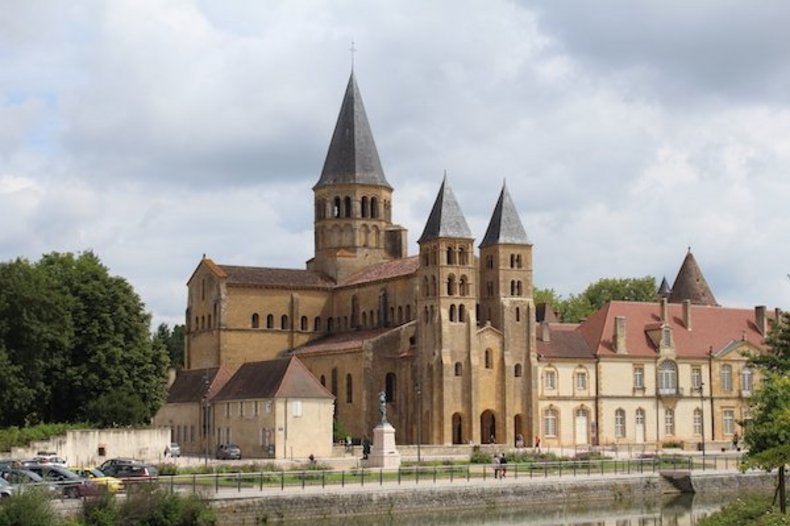
Basilique du Sacré-Cœur de Paray-le-Monial
Reasons to believe:
- All the details of Margaret Mary's life are well known, since, at the request of her confessor Father Rollin, she wrote her autobiography. The 1880 original edition, Vie de la bienheureuse Marguerite-Marie Alacoque tirée textuellement d'un manuscrit écrit par elle-même, is available online.
- Her visions have nothing to do with pathological hallucinations: Margaret Mary never abandoned her religious daily duties, or show any social disconnection. She lived a normal community life, under the authority of her superior. Her writings have all the hallmarks of a sound and open personality.
- Until her death, Margaret Mary always and immediately confided what she experienced to her confessor, so as to make sure that she was not the plaything of illusions.
- It is absurd to think that Margaret Mary could have been manipulated or misled. The attitude of the Paray nuns, including hers, is a sign of their honesty: no one knew the nature of the phenomena Margaret Mary was experiencing, and they all awaited the Church's pronouncement. It was the Jesuit Saint Claude La Colombière, previously unknown to Margaret Mary, who discovered and spread the messages of Jesus, during a stay at Paray.
- Likewise, it would be a mistake to write off the saint's visions as being produced by human inspiration or collective hype: the whole of the 17th century was rigorously suspicious of "visionaries".
- The characteristics of her visions of the Sacred Heart perfectly match other important medieval visions, a fact that Margaret Mary herself could not have known. The visions are perfectly structured and extremely precise, presenting an unsurpassable degree of coherence with visionary experiences recognized over the last two thousand years.
- The scriptural content of the messages, their evangelical tone, and the absence of theological error far exceed Margaret Mary's modest knowledge.
- The call to establish a feast of the Sacred Heart is necessarily divine. The idea could not have come from Margaret Mary, as the establishment of a new solemn feast, moreover on the basis of private revelations, is a rare occurrence.
- The Paray-le-Monial revelations follow the birth of the French School of Spirituality by a few decades (1600-1670). This timing is inexplicable.
- The spiritual fruits of the apparitions of the Sacred Heart to St Margaret Mary are still visible today: Paray-le-Monial attracts 200,000 pilgrims and visitors every year. Several popes have recognized the major importance of Paray's messages.
Summary:
Margaret Mary Alacoque was born in Burgundy's Charolais region on July 22, 1647. She was baptized three days later. Her father, Claude Alacoque, was a judge and royal notary. He married Philiberte Lamyn in 1639. The couple had six children. The family lived quite comfortably until 1659, when Claude died. After that, Philiberte and her children sought refuge with harsh relatives who turned their daily lives into a nightmare of humiliation, pressure, insults, beatings, and so on.
verwhelmed by her suffering and difficulties, Philiberte decided to send Margaret to the Urbanist Sisters - the Poor Clares school - of Charolles. It was in this religious convent that Margaret was allowed to make her first Communion at the age of 9. It was there also that at the age of 11 she was stricken with rheumatic fever and had to come home. The resulting, unexplained paralysis forced her to stay in bed for the next four years: "I was about four years without being able to walk," she says; "the bones pierced my skin on all sides." She was cured in an instant by a vision of the Blessed Virgin Mary, who prompted her to give her life to God by becoming her "daughter". Many witnesses have reported this miracle.
In June 1671, Margaret was admitted as a postulant to the Visitation convent at Paray. On August 25, 1671, the feast of St. Louis King of France, she donned the religious habit. The name Mary was added to that of Margaret. For the next few months, she lived "always lost in God". Her superiors wanted to ascertain that she was guided by the Holy Spirit. Her mystical visions continued, leading to increased uneasiness from the nuns in her community (the Visitation is an order based on a simple, rigorous evangelical life that rejects the miraculous), who were hesitant to let Margaret Mary make her solemn vows.
After some thought, her profession was postponed. A few hours later, Jesus said to her: "Tell your superior that there is nothing to fear in receiving you, that I answer for you, and that, if she finds me solvent, I will be your guarantor!" Mother Marie-Françoise de Saumaise has just taken over the running of Paray. Margaret Mary reported Jesus’s words to her. The new superior demanded proof: she told Margaret Mary to ask Jesus to make the young nun useful to her Visitation sisters by practicing the observances proper to nuns. Shortly afterwards, Jesus said these incredible words: "My daughter, I grant you all this, for I will make you more useful to religion than she [the superior] thinks, but in a way that is still known only to me; from now on, I will adjust my graces to the spirit of your rule [...]. I am happy that you prefer the will of your superiors to mine [...]. Let them do whatever they want with you: I'll find a way to make my plans succeed."
A first incident struck the sisters. Ever since she was a child, Margaret had had an unsurpassable aversion to cheese. Her brother Chrysostom, when he accompanied her to the monastery, had asked that she not be forced to eat cheese, lest she fall ill. One day in 1682, she was accidentally offered a piece of cheese. The Mother Superior asked her to eat it in order to make a sacrifice pleasing to God. As natural repulsion prevailed, the superior allowed her to stop eating it. The next day, the saint prayed for a long time. That evening, as if nothing had happened, she ate cheese heartily for the first time in front of her surprised sisters. She would continue to eat cheese every time it was served to her until the day she died.
A second event also drew some notice. The community owned a donkey and a colt. The novice mistress had asked the young nuns to take care that the animals didn't damage the vegetable garden, and at the same time told them not to tie them up. When it was Margaret Mary's turn to look after the animals, she remembered this order, but the animals "did nothing but run around" and, she said, "I had no rest until the evening Angelus." Then, one day, she had a vision of Jesus watching over the donkeys. He said to her: "Let them be, they will do no harm." The other sisters saw the animals running around the vegetable garden unattended, but later on couldn’t find a single evidence of hoof prints or damage!
A third sign was attested to by the entire community. In the spring of 1673, the saint lost her voice. She redoubled her prayers to be able to sing the services, but nothing worked. On July 1, 1673, during the celebration of a Te Deum, she saw a "little child shining like the sun" near her. Fearing it was a diabolical illusion, she asked the apparition: "If it is you, O my God, let me sing your praises!" And instantly, her voice returned!
The following December 27, Margaret Mary was praying before the Blessed Sacrament when she had a vision of Jesus showing his Heart, in a way that was "so effective and sensitive that it left me in no doubt as to the effects this grace produced in me." Christ told her that day: "My Heart is so consumed with love for mankind [...] that, no longer able to contain within itself the flames of its ardent charity, it needs to spread them through you."
Contrary to a groundless legend, the saint never shouted from the rooftops that she had visions, and for good reason: only her confessor and the Mother Superior knew about them.
At the time, the Church was warning against "visionaries", and St. Francis de Sales, co-founder of the Visitation order, while admitting the existence of mystical experiences, emphasized their secondary place in Christian life.
These visions were in no way hallucinations. They never had the least negative effect on Margaret Mary. She was filled with peace, and mysteriously learned great spiritual lessons from and about the Sacred Heart of Jesus that she had never learned from a teacher or a book. Like St. Teresa of Avila, whom she had also never studied, she declared that her visions were more real than reality. "I could see him [Jesus], feel him close to me, and hear him much better than if it had been with the bodily senses." Another difference between these visions and pathological hallucinations is this: Margaret Mary never abandoned her daily duties at the convent and never withdrew from community life. After looking after the animals, she even became mistress of the "little habit" sisters (the young boarding school students).
Early in 1675, Jesuit Father Claude La Colombière came to Paray to give a talk to the nuns. Margaret Mary, who had never heard of him, received this announcement from Jesus: "This is the one I am sending you." After his talk, the priest asked Mother de Saumaise to tell him who this young nun was, whom he had seen for the first time, pointing to the place where Margaret Mary was sitting. He then was able to meet her. The Jesuit asked Margaret Mary to continue writing down the messages she received, and to take them immediately to her superior each time
On June 20, 1675, Jesus revealed his Sacred Heart to her: "This is the Heart that has so loved mankind, that it has spared nothing to the point of exhausting itself and consuming itself to show them its love; and in return, I receive from most only ingratitude [...]. For this reason I ask that the first Friday after the octave of the Blessed Sacrament be dedicated to a special feast in honor of my Heart [...] by making reparation of honor [...] to repair the indignities it has received during the time it has been exposed on the altars." The saint replied that, once again, she felt unworthy of such a mission and that, in any case, no one would believe her! Jesus ordered her to speak to Father La Colombière, whom he had sent to Paray for "the accomplishment of this purpose".
In 1678, Mother de Saumaise left Paray for another monastery. Her replacement, Mother Péronne-Rosalie Greyfié, was an exceptional nun. In December 1678, Father La Colombière returned from a long trip abroad. Mother Greyfié obtained from him a report on the saint's experiences: "It wouldn't even matter if they were diabolical illusions [...]. There is no appearance of that, because if it was the devil trying to deceive her, he would be deceiving himself, since humility, simplicity, exact obedience and mortification are not the fruits of the spirit of darkness." The devil was a constant source of bother for Margaret Mary. One day, he pushed her from the top of a staircase in front of several nuns; another time, while she was talking with some sisters in the warming room, they suddenly saw the stepladder on which she was sitting start to move by itself; another time, the seat on which she was sitting slipped away from her three times in a row.
A few months before her his death, on June 17, 1689, Jesus asked Margaret Mary to make his will known to the King of France: that he would consecrate the kingdom to the Sacred Heart and sew its image on the royal banners. Despite the saint sending this plea to the Visitation Convent of Chaillot and to the King's confessor, the Jesuit de La Chaise, King Louis XIV either never heard of this message, or he pretended not to know it... A remarkable coincidence of dates has been noted: 100 years to the day after this message from Jesus was communicated, on June 17, 1789, the Estates-General became the National Assembly, paving the way for the fall of the monarchy.
The spiritual fruits of Paray are countless. The practice of the First Friday devotion, for nine months in a row, has its origins in the twelve "promises" Jesus made to Margaret Mary: "I will give them all the graces necessary for their state of life [...] I will be their sure refuge during life and especially at death. [...] His [the Sacred Heart's] love will grant to all those who take communion on the first Fridays of the month, nine times in a row, the grace of final penance, so that they will not die in my disgrace." This text was inserted in its entirety in the bull of canonization of Saint Margaret Mary (May 13, 1920) by Benedict XV.
In just a few years, this woman who longed "to be buried in eternal oblivion and disregard by creatures" became famous the world over. The Paray monastery became a place of pilgrimage in the 1690s, and the feast of the Sacred Heart was officially instituted on February 6, 1765, by Pope Clement XIII. It was extended to the universal Church on August 23, 1856 by Pius IX. In 1899, Leo XIII consecrated humanity to the Heart of Jesus.
Patrick Sbalchiero
Beyond reasons to believe:
Margaret Mary's immense impact stands in stark contrast to the ordinariness of her life.
Going further:
The Autobiography of Saint Margaret Mary by Margaret Mary Alacoque (Author), The Sisters of the Visitation (Translator) TAN Books (December 13, 2015)
More information:The Letters of St. Margaret Mary Alacoque: Apostle of the Sacred Heart, by Margaret Mary Alacoque - TAN Books (April 16, 1997)
Article “The Revelation of the Sacred Heart of Jesus Paral-le-Monial, France”
Book Saint Margaret Mary Alacoque And the Sacred Heart of Jesus - Emily Beata Marsh and Dani Lachuk - Encounter the Saints Series Book 37 (Pauline Books and Media)
Book Visions of Saint Margaret Mary Alacoque by Bob and Penny Lord (Journeys of Faith, July 19, 2011)
The Letters of St. Margaret Mary Alacoque: Apostle of the Sacred Heart, by Margaret Mary Alacoque - TAN Books (April 16, 1997)
Article “The Revelation of the Sacred Heart of Jesus Paral-le-Monial, France”
Book Saint Margaret Mary Alacoque And the Sacred Heart of Jesus - Emily Beata Marsh and Dani Lachuk - Encounter the Saints Series Book 37 (Pauline Books and Media)
Book Visions of Saint Margaret Mary Alacoque by Bob and Penny Lord (Journeys of Faith, July 19, 2011)










